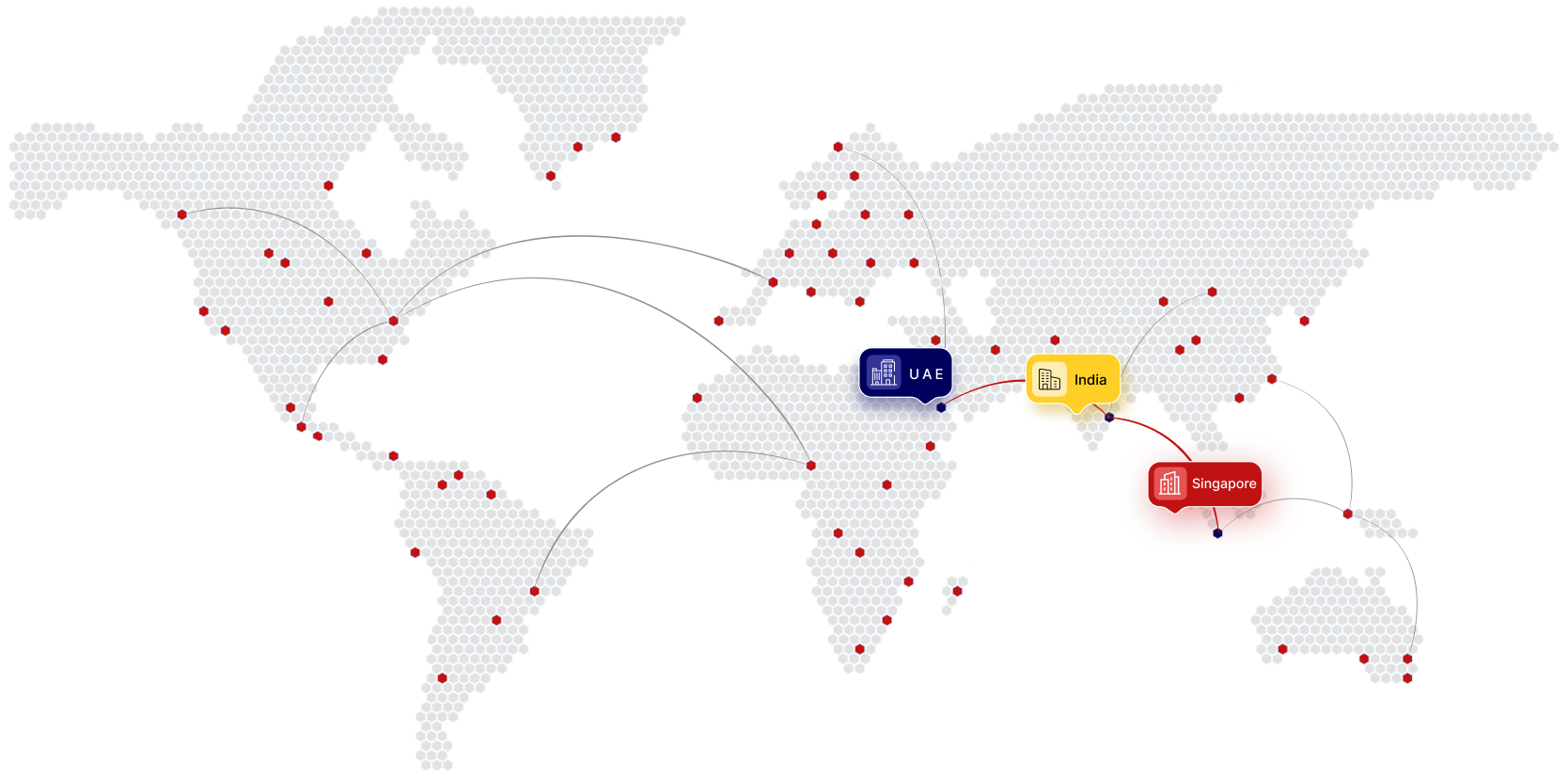- Article
- April 2, 2016
During talks in Jerusalem on March 29 between Chinese Vice-Premier Liu Yandong and Israeli Prime Minister Benjamin Netanyahu, China and Israel formally agreed to start negotiations on a bilateral free trade agreement (FTA).
Last year, China and Israel successfully completed a feasibility study on the FTA, after exploratory talks had begun in 2013.
Netanyahu noted that China is now Israel’s third-largest trading partner, with total annual trade of USD11.4bn in 2015, and that there is “the potential for a lot more.” It has been suggested that an FTA could double trade between the two countries.
China’s total investment in Israel has reached USD6bn. Israeli President Reuven Rivlin told Liu during their meeting on March 29 that his country hopes to further strengthen cooperation in fields such as science, technology, innovation, and agriculture.
- Article
- April 2, 2016
The Governments of Finland and the United Arab Emirates have signed an agreement on the exchange of information for tax purposes.
The agreement was signed on March 27 by Younis Haji Al Khoori, Undersecretary of UAE Ministry of Finance (MoF), and Riitta Swan, the Finnish Ambassador to the UAE.
Al Khoori said that the agreement demonstrates the country’s commitment to international standards on tax transparency. “The Ministry of Finance is committed to implementing the highest standards of economic transparency and exchange of information for tax purposes whereby these agreements provide a legal framework for tax authorities to prevent any sovereignty violations of other countries,” he said.
The tax information exchange agreement adds to the double tax avoidance and investment protection agreements signed by Finland and the UAE in 1996.
According to the UAE MoF, bilateral trade between the two countries stood at AED342m (USD93m) in 2015.
- Newsletter
- March 31, 2016
Dubai Customs announced the introduction of the Authorised Economic Operator (AEO) programme in September 2015 in line with Dubai Customs’ vision to be the leading customs administration in the world supporting legitimate trade. The AEO is one of the pillars of the WCO SAFE Framework of Standards to Secure and Facilitate Global Trade (SAFE Framework), aimed at enhancing the security in the international supply chain while facilitating global trade.
An effective AEO programme requires a true partnership between the customs administration and all agents in the international supply chain. The rationale of the AEO programme lies in the voluntary compliance with the applicable customs rules and regulations, and WCO supply chain security standards, in return for being granted a number of advantages and incentives.
- Article
- March 31, 2016
Recently, the Mumbai Bench of the Income Tax Appellate Tribunal, in the case of Forbes Container Line Pte Ltd vs ADIT (ITA No. 1607/MUM/2014) has held that the location of one director or the parent company being in India cannot be the only factor used to determine the Place of Effective Management (POEM) in India.
Facts of the case
-
- Forbes Container Line Pte Ltd (FCL Singapore or the taxpayer) was incorporated in Singapore. It was a Non-Vessel Operating Carrier Company (NVOCC) and had operations across Asia and the Middle East. FCL Singapore was a wholly owned subsidiary of Forbes and Co. Ltd (FCL India) which was a company incorporated in India. FCL Singapore had filed its return of income declaring nil income.
-
- The Assessing Officer (AO) was of the view that the effective management and control of the taxpayer was in India as one of the directors of the taxpayer was also a director in FCL India, was permanently residing in India and was looking after the policy matters of the taxpayer. Also, only one board meeting was held in Singapore.
- Furthermore, it was held by the AO that FCL India was involved in providing support services, maintenance of the bank account, concluding contracts on behalf of the taxpayer with various banks/Reserve Bank of India (RBI), deciding the brokers, dealing with labour for loading and unloading thereby acting as a deemed agent for FCL Singapore and leading to the formation of an Agency Permanent Establishment (Agency-PE). Accordingly, the AO also held that the taxpayer had a fixed place PE in India and its income was taxable under section 44B (shipping income) of the Income Tax Act (Act).
-
- The First Appellate Authority (FAA) upheld the order of the AO on all grounds.
-
- Aggrieved by the decision of the FAA, the taxpayer appealed to the Tribunal.
- The Assessing Officer (AO) was of the view that the effective management and control of the taxpayer was in India as one of the directors of the taxpayer was also a director in FCL India, was permanently residing in India and was looking after the policy matters of the taxpayer. Also, only one board meeting was held in Singapore.
Taxpayer’s contention
-
-
- It had no fixed place of business in India; it was only a subsidiary of the Indian company. Furthermore, as per the provisions of Article 5 of the Double Taxation Avoidance Agreement (DTAA) between India and Singapore, under paragraph 10, a mere holding-subsidiary relationship does not constitute a PE.
-
- There was no bank account held in India. It only had a bank account in Singapore and all the transactions were effected through the same.
-
- Only 2.29% of the revenue was earned and received from FCL India and the majority of the income for the year under consideration was from operations carried out in the Middle East and other countries.
-
- Furthermore, the AO himself had admitted that the income earned was from the NVOCC and was not covered under the shipping activities and hence, there was no question of applicability of the provisions of section 44B of the Act
-
Tax Authorities’ contention
-
-
- The effective management and control was by FCL India and both the companies had a common director who was staying in India.
-
- Only one meeting was held during the year under consideration in Singapore.
-
- The income earned by the appellant would be liable to tax under section 44B as FCL India constituted a PE of FCL Singapore in India.
-
Tribunal’s observations
-
- The mere presence of the following factors does not decide the POEM of the company in India:
- staying of one of the directors in India;
- holding of only one meeting during the year in Singapore; and
- location of the parent company in India.
- With regard to the applicability of section 44B of the Act, it is held that since FCL Singapore did not own or charter or took on lease any vessel or ship, it was only providing container services to its various clients. Therefore, it was not engaged in shipping activities and hence, the provision of section 44B of the Act did not apply.
The income of FCL Singapore was liable to be taxed as business income and in the absence of a PE, no income was taxable in India.
- The mere presence of the following factors does not decide the POEM of the company in India:
- Newsletter
- March 31, 2016
Given the lack of room for manoeuvre amid the global economic slowdown, Chancellor of the Exchequer George Osborne’s latest UK budget contained a surprising number of tax measures.
Business tax roadmap
-
- Corporate income tax and losses
Alongside the budget, the UK government has published a business tax roadmap. This sets out cuts in business rates (an annual commercial property tax), cuts in the rate of corporate income tax from 20% to 17% by 2020, and cuts in the petroleum revenue tax paid by oil and gas companies.
The roadmap also reforms the relief for corporate income losses. Companies will, in future, be able to carry forward such losses against all types of income, and surrender them for use by other companies in the same group. However, if profits exceed £5 million (presumably group not company profits), only 50% of profits can be offset by losses. These two measures should take effect from 1 April 2017, but a restriction on banks only being able to offset 25% of profits against pre-April 2015 losses will be introduced one year earlier.
-
- Stamp duty land tax
Also included in the business tax roadmap are changes to the system of stamp duty land tax (SDLT), which businesses pay when they acquire commercial properties. The changes follow the principles adopted by the Chancellor last year for residential property, and will take effect for transactions entered into after 17 March 2016.
Prior to the budget, purchasers paid nothing if the property cost under £150,000, 1% of the total value if it cost between £150,000 and £250,000, 3% if it cost between £250,000 and £500,000 and 4% if it cost more than that. Now purchasers will pay 0% on the first £150,000, 2% on the next £100,000 and 5% on the balance. So, for a business premises costing £200,000, the SDLT will now be £1,000 ((£200,000-£150,000) x 2%) rather than £2,000 (1% of £200,000).
-
- Interest deductions on taxable profits
The business tax roadmap also includes restrictions on the amount of interest that can be deducted from taxable profits. From 1 January 2017 this will be set at 30% of EBITDA (earnings before interest, tax, depreciation and amortisation) for groups of companies with interest deductions over £2m. There will be a group ratio rule based on net interest to EBITDA for worldwide groups, and the existing worldwide debt cap will be abolished.
There are other anti-avoidance measures in the business tax roadmap, including increasing the chances of a withholding tax applying to royalty payments, and measures to tax offshore property developers on their UK developments. Businesses have been asking for another roadmap and therefore should welcome this document; however the general theme is one of relief for small businesses that is to be paid for by larger enterprises.
Personal tax
From a personal tax perspective, the Chancellor announced the abolition of Class 2 national insurance contributions (currently £2.80 per week for the self-employed) with effect from 6 April 2018. He also announced that individuals will be able to earn £1,000 from trading and £1,000 from renting property without paying income tax. Those with incomes in excess of these sums can either return income less expenses or income less the £1,000 allowance. These allowances take effect from 6 April 2017 and are welcome simplification measures.
Mr Osborne also announced a personal allowance increase for the year ending 5 April 2018. The amount of income that can be earned before any tax is paid will rise to £11,500, and the amount of income on which basic rate tax (broadly 20%) is paid, will increase to £33,500.
-
- Individual savings accounts
The annual amount that can be saved into an Individual Savings Account (ISA), in which income and gains are tax-free, will increase to £20,000 from 6 April 2017. Few working basic-rate taxpayers can afford to save £20,000 a year, so this is of benefit to higher earners, and to those with pre-existing savings who can move funds from their taxed accounts into ISAs. The Chancellor is also planning to introduce a Lifetime ISA. This will allow persons between 18 and 40 years of age to save up to £4,000 per annum, and the government will top up the fund by £1 for every £4 saved. This measure will be subject to consultation.
Capital gains tax
The Chancellor also announced reductions in the rates of capital gains tax (CGT) from 28% to 18% for higher rate taxpayers and trusts and from 18% to 10% for basic rate taxpayers, although in practice extremely few basic rate taxpayers pay CGT. These changes take effect from 6 April 2016 and may reduce share trading volumes between now and then. The old rates continue to apply to gains on let residential property and second homes, and to “carried interest” for private equity managers. With the previously announced increases in dividend tax rates (to over 38% for the wealthiest taxpayers) taking effect at the same time, investors are likely to be looking for capital returns in future rather than yield, whilst holding their high-yielding investments in the increasingly generous ISAs.
From a stand-alone tax perspective, this was a good budget for savers, and investment managers will now focus on rebalancing their clients’ portfolios.
- Newsletter
- March 31, 2016
Background
The fiscal budget was announced in India on 29 February 2016. Like every year the government released several measures to accelerate growth and development in the country. One of the most important developments from a Transfer Pricing (TP) regulations perspective was introduction of Country-by-Country (CbyC) reporting norms for TP documentation with effect from Assessment Year (AY) 2017-18. These norms are based on recommendations issued by the Organisation of Economic and Commercial Development (OECD) and G20’s – Base Erosion and Profit Shifting (BEPS) action plan 13.
Many countries that are members of OECD and the G20 member countries have already introduced these TP documentation norms in their local regulations. These norms are based on one of the most important objective of transparency impressed upon by the OECD for prevention of BEPS.
OECD had recommended three-tier TP documentation including:
- Master file – requirement to provide an overview of the Multinational Enterprises (MNEs) business and explain the MNE’s TP policies in the context of its global economic, legal, financial and tax profile.
- Local file – to demonstrate that the taxpayer has complied with the arm’s length principle in its material intragroup transactions. Entities need to
– Demonstrate arm’s length nature of transactions;
– Contains the comparable analysis.
- Country by Country (CbyC) report –to provide information to a tax authority to enable it to undertake a TP risk assessment, data may also be used to assess wider BEPS related risks. It is required to:
– provide jurisdiction-wise information on global allocation of income, taxes paid/accrued, the stated capital, accumulated earnings, number of employees and tangible assets
– provide entity-wise details of main business activities which will portray the value chain of inter-company transactions.
Based on the above OECD recommendations India has proposed to introduce CbyC reporting norms in their local tax and TP regulations.
Master file and local file
The Memorandum to the Finance Bill states that a master file will have to be maintained and the detailed rules regarding the same will be notified at a later date. However, no threshold for preparation of master file has been prescribed.
Local file related regulations that already exist in the law may continue or may be aligned to the recommendations of the OECD, however the same can be clear only once the detailed Rules in this regards are issued.
CbyC reporting
A new section or provision (proposed Section 286 of the Income-tax Act, 1961) on CbyC reporting has been introduced. The CbyC provisions in the budget require the Indian Parent entity of an international multinational group or any other designated group entity in India (referred to as alternate reporting entity) to file a CbyC report for financial year 2016-17 before the due date of filing of Return of Income i.e. 30 November 2017.The threshold for filing the CbyC report has been maintained at EUR750 million and the format shall be notified in the Rules at a later date. However, it is proposed in the memorandum that the OECD prescribed template will be adopted.
1. The CbyC report will be required to furnish the following:
- the aggregate information in respect of the amount of revenue, profit or loss before income-tax, amount of income-tax paid, amount of income-tax accrued, stated capital, accumulated earnings, number of employees and tangible assets not being cash or cash equivalents, with regard to each country or territory in which the group operates;
- the details of each constituent entity of the group including the country or territory in which such constituent entity is incorporated or organised or established and the country or territory where it is resident;
- the nature and details of the main business activity or activities of each constituent entity.
- any other information as may be prescribed
2. Responsibility of the local constituent entity: The CbyC report will have to be furnished by the local constituent Indian entity if the parent entity is resident of a country:
- with which India does not have an agreement providing for exchange of information under the CbyC report; or
- there has been a systemic failure of that country and the said failure has been intimated by the prescribed authority to such constituent entity.
‘Systemic failure’ with respect to a country means that the country has an agreement with India providing for exchange of CbyC report, but:
- in violation of the said agreement, it has suspended automatic exchange; or
- has persistently failed to automatically provide to India the report in its possession in respect of any international group having a constituent entity resident in India.
3. A ’constituent entity’ means:
- any separate entity of an international group that is included in the consolidated financial statement of the said group for financial reporting purposes, or is included for the said purpose, if the equity share of any entity of the international group were to be listed on a stock exchange;
- any such entity that is excluded from the consolidated financial statement of the international group solely on the basis of size or materiality; or
- any permanent establishment of any separate business entity of the international group included in (a) or (b) above, if such business unit prepares a separate financial statement
4. An ‘international group’ means any group that includes:
- two or more enterprises which are resident of different countries; or
- an enterprise, being a resident of one country, which carries on any business through a permanent establishment in other countries.
5.Where there are more than one constituent entities of the international group, resident in India, the CbyC report shall be furnished by any one constituent entity, if:
- the international group has designated such entity to furnish the CbyC report on behalf of all the constituent entities resident in India; and
- the information has been conveyed in writing on behalf of the international group to the prescribed Indian tax authorities.
6. If any other alternate reporting entity of the international group has furnished the CbyC report with the tax authority of their country, there will be no need for the local constituent entity to furnish the same again locally if the following conditions are satisfied:
- the CbyC report is required to be furnished under the local law of that country;
- that country has entered into an agreement with India providing for exchange of the CbyC report in respect of the international group;
- that country’s prescribed authority has not conveyed any systemic failure in respect of the said country to any constituent entity resident in India;
- the said country or territory has been informed in writing by the constituent entity that it is the alternate reporting entity on behalf of the international group.
7. The Indian revenue authorities may, for the purpose of determining accuracy of the information furnished under the CbyC report, ask the reporting entity to furnish such information or documents as may be deemed necessary, after giving a 30-60 days’ notice.
8. Annual accounting period, for which data has to be furnished will be an accounting period with respect to which the parent entity of the international group prepares its financial statements under their local laws and local accounting standards.
9. Penalty provisions relating to TP documentation
- Failure to furnish information and documentation under the proposed three-tier documentation structure by the due date will be INR500,000 (approximately USD7,500).
- Pursuant to a transfer pricing adjustment, following specific penalty provisions have been proposed in situations wherein the tax payer has failed to maintain appropriate documentation or failed to disclose international transaction:
-Penalty at 50 percent of the tax payable on under-reported transaction
-Penalty at 200 percent of the tax payable on misreporting of transaction
- Failure on account of CbyC reporting:
-Failure to furnish CbyC report by the due date of filing of return of income
1. Delay upto one month – INR 5,000 (USD75) per day
2. Delay beyond one month – INR 15,000 (USD230) per day
3. Delay payment of penalty after receipt instructions to pay – INR 50,000 (USD750) per day
- Failure to furnish additional information and documents sought by the Revenue authorities
1. Delay upto one month – INR 5,000 (USD75) per day from the day on which the period for furnishing the information and document expires
2. Delay beyond one month – INR 5,000 (USD75) per day from the day on which the period for furnishing the information and document expires
3. Delay payment of penalty after receipt instructions to pay – INR 50,000 (USD750) per day
- Inaccurate information filed under the CbyC report*
1. Delay upto one month – INR 500,000 (USD7500)
2. Delay beyond one month – INR 500,000 (USD7500)
3. Delay payment of penalty after receipt instructions to pay – INR 500,000 (USD7500)
*Where the information filed under the CbyC report is inaccurate, a penalty of INR500,000 (approximately USD7,500) will be levied if:
– the entity has knowledge of the inaccuracy at the time of furnishing the CbyC report but fails to inform the prescribed authority; or
– the entity discovers the inaccuracy after the CbyC report is furnished and fails to inform the prescribed authority and furnish a correct report within a period of fifteen days of such discovery; or
– the entity furnishes inaccurate information or document in response to request for additional information and documents.
Administrative TP proposals
There are a few administrative amendments proposed by the budget from a TP perspective:
– Since time limit for completion of regular income tax audits proposed to be reduced to three months, the time limit for completion of TP audits will also consequentially be reduced by three months
– The Revenue authorities will have no right to appeal against the instructions issued by the Dispute Resolution Panel.
– In the circumstances wherein the time limit for completion of assessment proceedings is stayed (i) by an order or injunction of any court or (ii) for a period to obtain information under the agreement referred in Section 90 or 90 A of the Act, the period for completion of assessment proceedings by the Transfer Pricing officer, subsequent to such stay shall be minimum 60 days.
A Member Firm of Andersen Global
- 170+ Countries
- 390+ Locations
- 13,000+ Professionals
- 1800 + Global Partners

- 170+ Countries
- 390+ Locations
- 13,000+ Professionals
- 1800 + Global Partners

- 170+ Countries
- 390+ Locations
- 13,000+ Professionals
- 1800 + Global Partners












